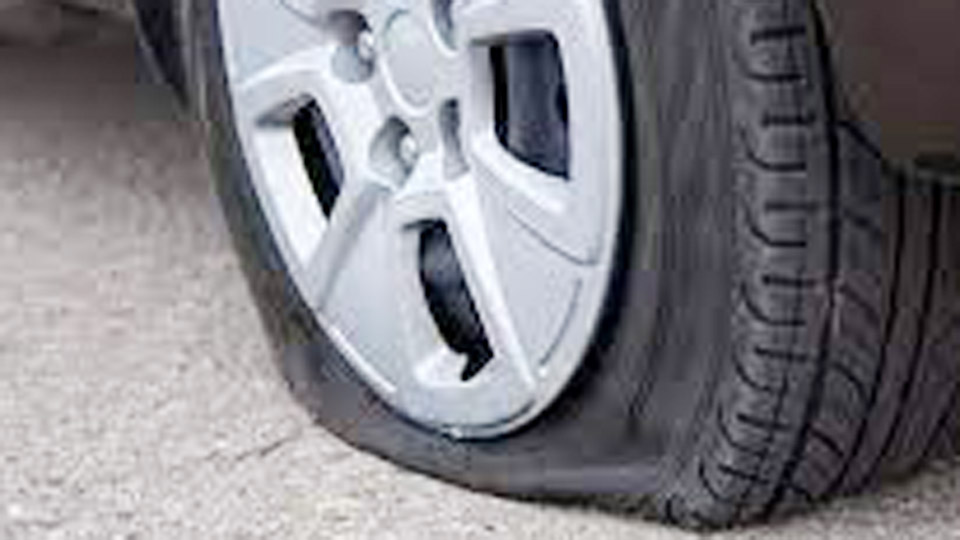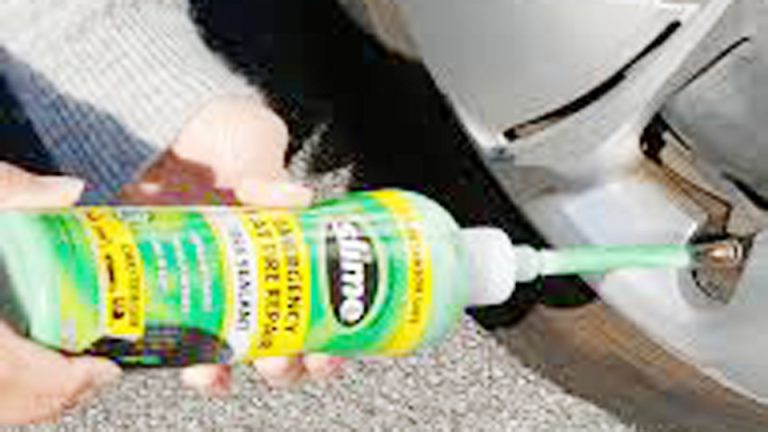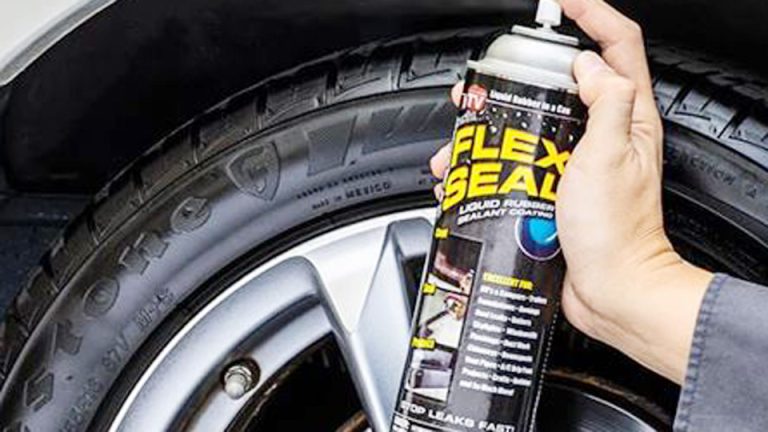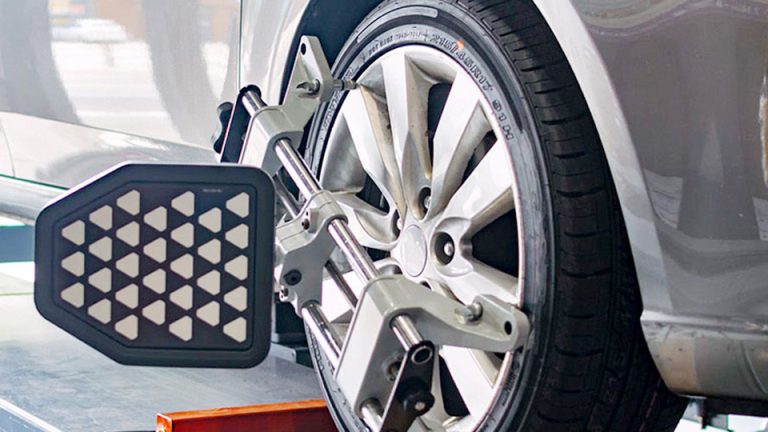A flat tire always seems to happen at the worst time—whether you’re rushing to work, stuck on the highway, or miles from a repair shop. That’s usually when people reach for a can of Fix-a-Flat and hope for a quick solution. But the real question is: Does Fix a Flat Work on Car Tires? The short answer is yes—it can seal small punctures in the tread and get you back on the road temporarily. I’ve used it myself in emergencies and seen plenty of drivers limp safely to a tire shop thanks to it. The catch is that it’s not a permanent repair.
Fix-a-Flat can clog tire pressure sensors, leave messy residue inside the tire, and won’t hold up against bigger punctures, sidewall damage, or long-term driving. I always remind drivers: it’s a handy band-aid, not a cure. The right fix is still a proper patch or replacement at a tire shop.

Image by goodcar
What Exactly Is Fix-a-Flat and How Does It Function in a Tire?
You’re in your garage, tools scattered around, and you’ve just noticed a slow leak in your tire. Fix-a-Flat is essentially a canned tire sealant and inflator combo. It’s a foam-like substance propelled by compressed air or gas that you inject directly into the tire through the valve stem. Once inside, it coats the inner walls, seeks out the puncture, and hardens to form a temporary seal while also adding air pressure.
From a mechanic’s perspective, it’s a blend of latex particles, fibers, and propellants. When I first started using it back in the early 2000s on an old Ford F-150, I was skeptical. But it did the trick for small holes—think nails or screws up to about 1/4 inch. It expands to fill the gap and then sets as the tire rotates, distributing evenly. However, it’s not meant for massive gashes or sidewall damage; those need professional attention.
Why does this matter? Safety first— a properly sealed tire maintains pressure, preventing blowouts that could lead to accidents. Performance-wise, it keeps your ride stable until you can swap in a spare or get a patch.
Cost? A can runs about $10-15 at places like AutoZone or Walmart, way cheaper than a tow truck. Reliability is hit or miss, though; I’ve seen it last 50 miles easy, but humidity or extreme temps can affect how well it cures.
Common Issues with Flat Tires and When Fix-a-Flat Might Save the Day
Flats happen for all sorts of reasons, and spotting the signs early can make all the difference. You might notice your car pulling to one side, a thumping noise, or that telltale hiss of air escaping. In my shop, I’ve dealt with everything from road debris punctures to bead leaks where the tire separates from the rim.
One common problem is slow leaks from embedded objects like screws. That’s where Fix-a-Flat shines—it can seal those without you even removing the offender. But for valve stem failures or dry-rotted rubber, it’s useless. I remember a buddy who tried it on a cracked rim; the sealant just spewed out, making a bigger mess.
Replacement—or in this case, using a sealant—becomes necessary when you’re far from help. Why? A deflated tire ruins fuel efficiency (up to 10% loss per underinflated tire, per EPA estimates) and compromises handling. If you’re on a highway, it’s a reliability issue that could strand you. From hands-on work, I’d say use it only if your spare is inaccessible or you’re in unsafe conditions. Otherwise, swap the tire properly.
Pros and Cons of Using Fix-a-Flat on Your Car Tires
Let’s weigh this out honestly, like I do when advising customers in the shop. On the plus side, it’s quick and easy—no jacking up the car required. I’ve used it on a Chevy Malibu during a family road trip, and it got us 30 miles to the nearest tire center without issue. It’s compact, fitting in your trunk alongside jumper cables, and works on most passenger car tires.
But cons? Oh boy. It can imbalance the tire if not distributed right, leading to vibrations at highway speeds. Cleanup is a nightmare for pros like me— the goo clogs sensors in TPMS (Tire Pressure Monitoring Systems) found in most cars post-2007.
And it’s not always reliable on run-flat tires or those with larger punctures. Cost-wise, while cheap upfront, it might void warranties or require a full tire replacement if it damages the interior.
In the US market, brands like Fix-a-Flat (the original), Slime, or TireJect are popular. Fix-a-Flat is widely available at O’Reilly Auto Parts or even gas stations. Pros: Non-flammable formulas now make it safer. Cons: Some older versions used flammable propellants, so check labels.
| Aspect | Pros | Cons |
|---|---|---|
| Ease of Use | No tools needed; shake and inject | Messy cleanup; can clog valves |
| Effectiveness | Seals small punctures quickly | Fails on sidewalls or large holes |
| Cost | $10-15 per can | May lead to $100+ tire repair bills |
| Safety | Gets you off the road fast | Imbalances tire; potential sensor damage |
| Reliability | Lasts 50-100 miles typically | Weather-dependent; not for long-term use |
Does Fix-a-Flat Work on Different Types of Car Tires?
Not all tires are created equal, and that’s a lesson I’ve learned the hard way wrenching on vehicles from compact Hondas to beefy Jeeps. Standard radial tires? Absolutely, Fix-a-Flat works well on them for punctures in the tread area. I’ve fixed countless sedans like Toyota Camrys with it.
But what about low-profile performance tires on sports cars? Those are trickier—the sealant might not distribute evenly due to the stiffer sidewalls. Run-flat tires, common on BMWs or Mercedes, are designed to drive deflated, but adding sealant can gum up the works and isn’t recommended by manufacturers.
Off-road tires for trucks? It can work, but mud and debris often make punctures irregular. I once tried it on a Ford Ranger’s all-terrain tires after a trail mishap; it held for the drive home but needed a proper plug afterward. Bias-ply tires on older classics? Skip it—they’re not as compatible with the foam.
Compatibility matters: Check your vehicle’s manual. For US models like Fords or Chevys, it’s generally okay for emergencies, but always verify tire size (e.g., P215/65R15).
How to Use Fix-a-Flat Step by Step: A Garage Guide
I’ve done this dozens of times, so trust me—stay calm and follow these steps.
First, park safely, hazards on. Shake the can vigorously for 30 seconds to mix the sealant.
Remove the valve cap and attach the hose securely to the stem. If the tire’s completely flat, roll the car slightly to position the puncture at the bottom.
Press the button to inject—listen for the hiss. It takes 2-4 minutes to empty the can. Detach and drive immediately at low speed (under 50 mph) for 2-3 miles to distribute the sealant.
Check pressure with a gauge; add air if needed at a station. Common mistake? Not driving right away—the stuff needs motion to seal.
Tools you’ll need: Just the can, but gloves help avoid mess. Safety tip: Wear eye protection; propellants can spray back. And never use near open flames.
Personal insight: On a rainy day fixing a neighbor’s Subaru, I forgot to shake it well—the seal failed halfway. Lesson learned: Prep matters.
OEM vs Aftermarket Tire Sealants: Which Should You Choose?
OEM—Original Equipment Manufacturer—sealants are rare for tires, as most carmakers don’t bundle them. Instead, they recommend spares or run-flats. But for aftermarket, Fix-a-Flat is king in the US, made by ITW Global Brands.
Aftermarket options like Slime (green goo, great for bikes too) or Gempler’s Tire Sealant offer variety. OEM-equivalent? Some kits from dealerships mimic it, but they’re pricier.
OEM pros: Matched to your vehicle, less risk of warranty issues. Cons: Hard to find, expensive ($20+).
Aftermarket: Cheaper, widely available at Advance Auto Parts. But quality varies—cheap knockoffs might not seal well.
From my bench, I’d go aftermarket for most folks. I’ve compared them on test tires: Fix-a-Flat seals faster than generics, but Slime lasts longer in heat.
| Option | OEM-Style | Aftermarket (e.g., Fix-a-Flat) |
|---|---|---|
| Price | $20-30 | $10-15 |
| Availability | Dealerships only | Everywhere: Walmart, Amazon |
| Compatibility | Vehicle-specific | Universal for cars |
| Durability | High, but limited options | Good for emergencies |
| Brands | Rare (e.g., GM kits) | Fix-a-Flat, Slime, TireJect |
Spotting Genuine Fix-a-Flat vs Fakes: Don’t Get Duped
In the auto world, counterfeits are rampant, especially online. I’ve seen fake cans that leak or don’t seal, wasting your time and money.
Genuine Fix-a-Flat has holograms on the label, clear UPC codes, and is made in the USA. Check for the blue-and-white can with detailed instructions.
Fakes often have blurry printing, no safety warnings, or odd smells. Buy from trusted spots like NAPA Auto Parts or direct from the manufacturer.
Tip: Scan the barcode with your phone app to verify. In my shop, I once got a bad batch—didn’t foam right. Always test on an old tire if unsure.
Maintenance Tips After Using Fix-a-Flat on Your Tires
Once you’ve used it, don’t forget about the tire. Drive straight to a shop for inspection; the sealant is temporary.
Monitor pressure daily— it can leak slowly. Clean the valve stem post-use to avoid clogs.
For long-term, rotate tires every 6,000 miles and check for wear. I’ve advised customers to replace the tire if the puncture’s off-center, as patches don’t always hold.
Common mistake: Ignoring TPMS lights. The goo can foul sensors, costing $50-100 to replace.
Real Workshop Stories: Times Fix-a-Flat Worked (and When It Didn’t)
Back in 2015, a young couple rolled into my shop with their Honda Civic limping on Fix-a-Flat. They’d hit a nail on I-70; it sealed perfectly, letting them drive 40 miles. We patched it properly, and they were good.
But another time, on a Dodge Ram with oversized tires, the sealant couldn’t handle a sidewall tear from off-roading. It bubbled out, and we had to tow it. Lesson: Know your limits.
Customers often ask, “Will it ruin my tire?” Not usually, if removed promptly. I’ve cleaned out hundreds—warm soapy water does the trick.
These experiences underline why it’s a tool, not a cure-all. It boosts safety by getting you moving, but pros like me prefer plugs for permanence.
Comparing Fix-a-Flat to Other Tire Repair Options
Fix-a-Flat vs. a spare tire? Spare wins for reliability but takes trunk space. Vs. plugs? Plugs are permanent but require tools.
TireJect is similar but eco-friendlier, no propellants. Slime works better on ATVs.
In the US, for sedans like Accords, Fix-a-Flat is fine. For SUVs, opt for heavier-duty sealants.
Pros of alternatives: Patches last years. Cons: Time-consuming.
From fixing fleets, I’d say combine them—use sealant emergently, then repair.
| Method | Fix-a-Flat | Plug Kit | Full Spare |
|---|---|---|---|
| Speed | 5 minutes | 15-20 minutes | 10-15 minutes |
| Cost | Low | Medium | High (if buying) |
| Permanence | Temporary | Semi-permanent | Permanent |
| Tools Needed | None | Plugger, reamer | Jack, lug wrench |
| Best For | Roadside emergencies | Garage fixes | Long drives |
Installation Safety and Best Practices for Tire Sealants
Safety isn’t optional in the garage. Always work on a flat surface, chock wheels.
Wear gloves and goggles—sealant can irritate skin. If it gets in eyes, rinse immediately.
For installation, ensure the tire’s not too hot from driving. Common error: Over-inflating, which stresses sidewalls.
Tools: Digital gauge for accuracy ($10 at Harbor Freight). Maintenance: Store cans upright, away from heat—I’ve seen expired ones fail.
Pro insight: Test your kit annually; shake and check pressure release.
Conclusion
Fix-a-Flat can indeed work on car tires as a quick, reliable temporary solution for small punctures, enhancing safety and getting you back on the road without breaking the bank. But remember, it’s not a replacement for proper repairs—treat it as a bridge to the shop. When buying, stick to reputable brands and check for authenticity to ensure performance and avoid fakes.
From my years turning wrenches, the key to smarter decisions is preparation: Keep a can in your trunk, know your tire type, and always prioritize safety. One final pro tip—after using it, inflate to the exact PSI on your door jamb sticker; it’ll maximize fuel efficiency and handling until you get that tire fixed right.
FAQ: Common Questions About Fix-a-Flat and Tire Repairs
How Long Does Fix-a-Flat Last in a Tire?
From what I’ve seen in real fixes, it can hold for 50-100 miles or a few days, depending on the puncture size and driving conditions. But get it professionally repaired ASAP to avoid permanent damage.
Can Fix-a-Flat Damage My TPMS Sensors?
Yes, it can coat and clog them, leading to false readings or failures. In my shop, we’ve replaced sensors post-sealant—costs around $50 each. Newer non-corrosive formulas are better, though.
Is Fix-a-Flat Safe for All Vehicles?
It’s safe for most passenger cars and light trucks, but avoid on motorcycles, heavy-duty vehicles, or tires with existing patches. Check your manual—some warranties exclude sealants.
What’s the Difference Between Fix-a-Flat and Slime?
Fix-a-Flat is foam-based for quick seals; Slime is liquid, better for preventing flats in advance. I’ve used both: Fix-a-Flat for emergencies, Slime for ongoing protection in work vans.
Should I Use Fix-a-Flat or Call for Roadside Assistance?
If you’re in a safe spot and the puncture’s small, go for it to save time. But if it’s a blowout or you’re unsure, call AAA or a tow—safety over speed every time.



